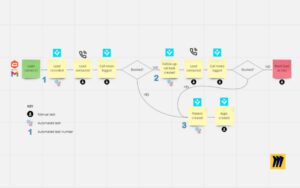The Personal Development Blog

How to Journal Like a CEO to Plan Your Day
Journaling isn’t just for reflection or emotional release — it’s a serious tool for strategy, clarity, and daily execution. Many high-performing CEOs start their day with a notebook, not a to-do list.
By using structured CEO daily journaling, you can set priorities, clear mental clutter, and sharpen your decisions — all before your first meeting. This guide will walk you through practical productivity journaling methods and help you build a habit that fuels momentum and consistent results.
Pro Tip: Great leaders write to think — not just to track.
Quick Guide: Why CEOs Journal Every Morning
- Define the day’s top goals before distractions begin.
- Prime your mindset with intention and gratitude.
- Process emotions before they shape decisions.
- Strengthen discipline by repeating your routine.
- Review patterns and progress over time.
Important: You don’t need a fancy notebook — just a quiet 10 minutes and a system that works.
Step-by-Step: Build a CEO-Style Morning Journaling Habit
Step 1: Set the Stage
Your journaling environment matters — more than you think.
Create a simple ritual:
- Choose a consistent time (ideally after waking or post-workout).
- Use a dedicated journal or digital tool.
- Pair with coffee, tea, or calm music.
- Avoid phones or screens during this time.
| Time Needed | Ideal Slot |
| 5–10 minutes | Immediately after waking |
| 10–20 minutes | After movement and hydration |
Quick Tip: Keep your journal and pen in sight to reduce resistance.
Step 2: Use a Structured Format
Unstructured writing has value, but for daily planning, structure creates clarity.
Three-part CEO journaling template:
- Morning Focus – Set intention.
- Top Priorities – Identify 1–3 critical tasks.
- Mental Clarity – Clear thoughts or concerns.
| Section | Sample Prompt |
| Morning Focus | “Today, I want to lead with…” |
| Top Priorities | “If I only get 1 thing done today, it’s…” |
| Mental Clarity | “I’m feeling… because…” |
Pro Tip: Use bullet points to move quickly — this is about focus, not perfection.
Step 3: Prime Your Mindset
Before diving into action, align your mindset with intention.
Power prompts:
- “What am I grateful for today?”
- “How do I want to show up?”
- “What outcome matters most?”
Why this works:
- Helps centre your thoughts.
- Shifts your attention away from stress.
- Builds resilience throughout the day.
Sustainability Tip: One line of gratitude is better than none — aim for consistency, not volume.
Step 4: Identify Your Top 3 Priorities
Don’t let your inbox dictate your day. You choose your focus.
How to define top tasks:
- Prioritise impact over urgency.
- Focus on one strategic task, one maintenance task, and one quick win.
- Avoid listing more than three.
| Priority Type | Example |
| Strategic | “Plan next product launch.” |
| Maintenance | “Review team reports.” |
| Quick Win | “Reply to pending client email.” |
Quick Tip: Rewrite your top 3 daily — even if they repeat. It reinforces clarity.
Step 5: Track Energy and Focus Patterns
Elite performers know when they work best — and when to rest.
Journaling for awareness:
- “Yesterday I felt most focused at…”
- “Energy dipped when…”
- “Today I’ll protect my best hours by…”
Benefits:
- Builds your personalised productivity map.
- Helps schedule deep work for peak times.
- Prevents burnout by highlighting fatigue triggers.
Step 6: Reflect Briefly at Day’s End
Evening reflection creates feedback loops — the secret to long-term growth.
Simple end-of-day prompts:
- “Did I complete what mattered?”
- “What distracted me?”
- “One thing I’ll do differently tomorrow is…”
| Time Needed | When to Reflect |
| 3–5 minutes | Before bed or post-work shutdown |
Pro Tip: Keep evening entries short. You’re building awareness, not writing a report.
Popular CEO Journaling Methods

The Five-Minute Journal
- Focuses on gratitude and daily intentions.
- Quick and easy — perfect for beginners.
| Section | Focus |
| Morning | Gratitude, goals, affirmations |
| Evening | Wins of the day, lessons learned |
The Ivy Lee Method
- Write the 6 most important things to do.
- Rank them and complete in order — no multitasking.
Why CEOs love it: It removes decision fatigue and sets clear priorities.
Bullet Journaling for Productivity

- Customisable.
- Combines task tracking, events, and notes.
- Works well with weekly planning.
Pro Tip: Choose a system that fits your brain — not the trend.
CEO-Style Journaling Examples
| Name | Habit |
| Richard Branson | Journals ideas and priorities daily. |
| Oprah Winfrey | Uses journaling for gratitude and focus. |
| Tim Ferriss | Writes Morning Pages for emotional clarity. |
| Jack Dorsey | Tracks daily goals and learning reflections. |
Quick Tip: Even 5 minutes of CEO journaling can match the depth of hours of distracted planning.
Common Journaling Mistakes to Avoid
| Mistake | Fix |
| Writing only when inspired | Build a routine — inspiration follows action. |
| Being too vague | Use specific prompts to stay focused. |
| Overplanning | Review your tasks, then move into action. |
| Skipping mindset | Clarity of mind is as valuable as a to-do list. |
Sustainability Note: A simple system you use daily beats a perfect system you abandon.
Frequently Asked Questions
Do I need to journal every day?
No — but daily journaling builds momentum. If you miss a day, pick it up again without guilt.
Can I journal on my phone?
Yes, but be cautious — phones can lead to distraction. Apps like Notion, Evernote, or Day One work well.
How long should a journaling session take?
Anywhere from 5 to 20 minutes. Keep it short, consistent, and useful.
What if I don’t know what to write?
Use prompts. Start with “Today I will…” or “Right now, I feel…” The words will follow.
Should I review my journal entries later?
Yes — weekly or monthly reviews show patterns, progress, and insights you might otherwise miss.
Write to Lead

Journaling is a thinking tool — not just a productivity trend. By building a simple, consistent routine around CEO daily journaling, using proven productivity journaling methods, and planning with clarity, you lead your day before it leads you.
You don’t need to be a CEO to think like one. You just need 10 minutes, a pen, and the courage to write what matters.
Think clearly. Plan intentionally. Lead every day.









